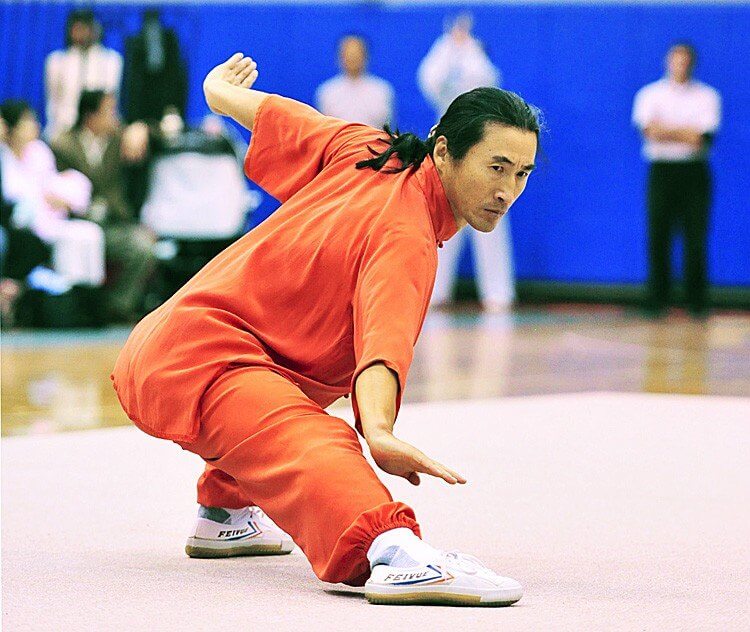SURPRISING Facts About The 8 Martial Arts Styles

VIDEO: Must Watch the action-packed video of Best fight scenes of UNDISPUTED 2 REACTION!!
Together, they form a complete system of self-defense and internal harmony, fit to stand against any type of attack or act of aggression. We have been offering our integrated martial arts classes for more than three decades. Our instructors are all highly skilled and certified in their practice, teaching powerful classes that build strong technique. Below are short descriptions of each style and the benefits found from practicing their techniques.
Kung Fu
kung fu
The movements of Kung Fu are derived from nature. Kung Fu practitioners move their bodies to move with the power and agility of a tiger or force of an ocean wave. The soft and hard movements of Kung Fu combine to develop flexibility, coordination, strength, and speed. Unlike linear movements of Tae Kwon Do or Karate, Kung Fu twists the body in all directions, dramatically increasing the development of the torso or core.
Hap Ki Do & Ai Ki Do
aikidoIn the practice of Hap Ki Do, students learn the balance of both hard and soft movement. Students become adept at using their hands and feet to target joints, pressure points and nerves. This style teaches students the proper range of motion for the human body and how to use that knowledge to incapacitate an opponent’s limbs with a minimum of pressure at the correct angles.
Ai Ki Do uses a similar knowledge of muscles and joints to block an opponent’s attacks through reliance on hand strength and fluid motions. Students achieve increased grip strength and an understanding of the swift movements needed to change a position of weakness into one of strength.
Ship Pal Gae (18 Weapons)
swordIn Ship Pal Gae, students study how the use of one weapon aids the understanding of the others. This martial arts style contains all of the 18 main weapons of Chinese martial arts. Students begin with simpler weapons such as the Tan Bong (short staff), and then move to more complicated weapons, such as the Jang Chu Chuck Bope (three section nunchaku) or the Sang Pyo Kom (two swords with hooks at the end of the blade). Training in Ship Pal Gae teaches the student to move the body and weapon as one and to always be aware of everything going on around them.
Tai Chi Chung
tai chiTai Chi Chung is a Chinese martial art of fluid, graceful movements that harmoniously set the entire body into motion. The body adapts to sway as a willow branch in a gentle breeze or to drift, softly as a cloud in the wind. Because movements originate from the student’s core, they are strong without requiring force or sharpness. The breath in Tai Chi matches carefully by the movement, bringing an overall sense of calm and well-being. Those who consistently practice internal martial arts such as Tai Chi Chung and Bagwa notice a greater ability to remain calm in stressful situations. They also benefit from increased awareness, endurance and a wellspring of energy that leads to a decrease in illnesses.
Udo and Jiu-Jitsu (Korean Style / Japanese Style)
jufoThe martial arts style known as Udo teaches you to use circular movements to throw your opponent off balance giving you the ability to take them to the ground. Through this, you learn to use their strength against them and how use the ground as a weapon. To do this students practice various rolling, gymnastic and tumbling techniques that build body control and core strength.
Kong Su / Tae Kwon Do (Korean Style / Japanese Style)
kong suKong Su includes the main movements of hard style martial arts that Tae Kwon Do and Karate originated from. Blocks and attacks are both hard and linear and capable of shattering an attacker. The student learns to put maximum speed and strength into the most direct path of attack or block. Students of Kong Su kick powerfully to the front, side, and rear in the blink of an eye; surging through defenses rather than manipulating around them.
Kom Do (Korean & Japanese Style)
kom doKom Do is the art of the samurai sword. The practice of Kom Do unifies the mind of the student with the intent of the blade. Kom Do requires an increased presence of mind to remain conscious of the path of the weapon and its impact on those around it. Students develop strong eye contact and the ability to sense the opponent’s intent through the smallest signals seen in peripheral vision. Kom Do training builds incredible mental awareness and the ability to quickly decide a course of action and follow through without hesitation.
Bagwa Chung
bagwaBagwa is based on the observation of flowing and crashing waters coursing around deep whirlpools. It is one of the internal forms of Traditional Martial Arts that sharpens reflexes and cultivates understanding of mind and body. The goal is to reach harmony between mind and body. Bagwa training enables the student to move their body like a coiled spring, smoothly and lightly, but with tremendous speed and power. Students learn to master the art of remaining inwardly calm while fists and feet strike multiple times within seconds.
Start your eight styles training now!
If you are interested in learning an integrative curriculum of eight martial art styles, come to Oom Yung Doe. One of our instructors will answer any questions you have, show you around the school, and walk you through the simple enrollment process.
http://8taughtas1.com/site/martial-arts-styles/





